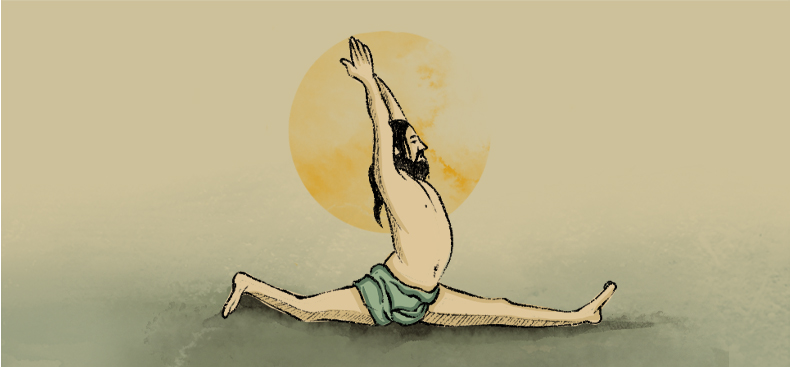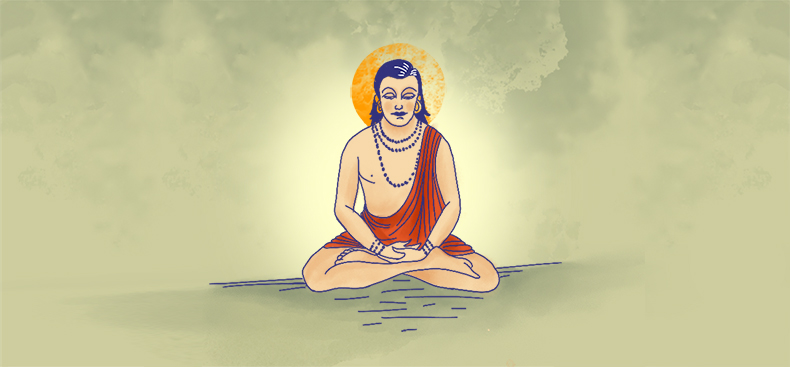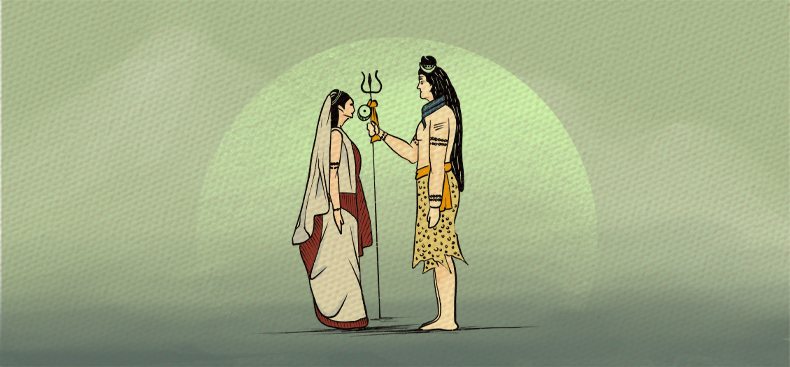While the physical practices were novel, the metaphysics underlying these practices were deeply vedāntic in character. The goal of Haṭha yoga, as can be seen from almost all the early Haṭha yoga texts, was to attain the union of brahman and ātman, an Advaita Vedānta goal par excellence. In this short essay, I will study five of the important very early Haṭha Yoga texts to show that their metaphysics is deeply embedded in a vedāntic framework. The physical practice of yoga and its metaphysics cannot be separated. The modern idea that yoga has nothing to do with Hinduism, propounded by certain academics and yoga gurus, is ideological posturing unsupported by the textual sources.
Before we discuss the vedāntic nature of these Haṭha yoga texts, we must note that the goal of yoga as a union of ātman and brahman goes back to the earliest of purāṇas. So, there is nothing new about Haṭha yoga using vedāntic terminology and metaphysics. Rather it points to the emergence of Haṭha yoga techniques from the same group of ṛṣi, muni and siddha who were practising yoga from the earliest of times.
The most important text of Haṭha yoga is the canonical Haṭhayogapradapīkā by the Nātha yogi Svātmārāma, dated to about early 1400 CE. This text is compiled from many earlier Śaiva and Vaiṣṇava texts on Haṭha yoga (most of which have been published and translated by the Kaivalyadham Institute in Lonavala). These early yoga texts can be divided into texts written by Nātha yogis and those written by the yogis who come from the Vaiṣṇava ascetic milieu—the former coming from the siddha/tantra lineage of Kuṇḍalinī and the latter from muni/rishi lineage of ascetic tapas. Let us now consider some of these foundational early Haṭha yoga texts to see their vedāntic leanings.
The Dattātreya-yogaśāstra, dated to roughly the 13th century, states that the goal of Haṭha yoga is the oneness (samatāvasthā) of ātman with paramātman, which is the state of samādhi.1Dattātreyayogaśāstra, 122-123. This state is also called jivanmukta—liberation in life—and when the yogi wants to give up his physical body, he can merge into parābrahman, the supreme self.2Dattātreyayogaśāstra, 124. In fact, in the very first verse of the text, the sage offers his obeisance to Lord Nṛsiṃha, who is the form of consciousness (cidātma) reposing in the state of bliss (sukha-svarūpa). This maṇgala verse proclaims the Vaiṣṇava and vedāntic leanings of the text loud and clear.
Another text, Gorakṣaśatakam (12th century), attributed to Nātha yogi Gorkṣanātha, breaks new ground with the development of advanced prāṇāyama techniques and chakra-based yoga. His concept of samādhi is the identification (samarasatva) of two entities (jīvatātman and paramātman). In the highest stage, sage Gorakṣa says, the knower of yoga attains non-duality (advaita) like milk poured into milk, or ghee into ghee, or fire into the fire.3Gorakṣaśatakam: With Introduction, Text, English Translation, Notes., ed. Swami Kuvalayānada and S.A. Shukla (Lonavla: Kaivalyadhama S.M.Y.M. Samiti, 2006), śloka 100.
Yogabīja, another prominent early Haṭha text, is a dialogue between Śiva and Devī that teaches the necessity of jñāna in the pursuit of yoga. Only jñāna, without the aid of yoga, cannot lead to mokṣa, and even yoga without jñāna cannot bring mokṣa. The text discusses the philosophical underpinnings of Haṭha yoga under the vedāntic umbrella of jñāna. At the end of the long philosophical discourse on yoga, Śiva says to the Devī: “As the salt on dissolution into the water takes the form of water, similarly the jīva after seeing brahman, takes the form of brahman and becomes one with him.”4Verse The vedāntic milieu of this text is amply demonstrated.
The Vasiṣṭha Saṁhitā, another text that plays a seminal role in the development of Haṭha yoga, states that samādhi is the state of equality (samatāvasthā) of the jīvātman and paramātman.5 Sage Vasiṣṭha holds that the brahman is with attributes and not the attributeless brahman of the Advaita. The metaphysics of this text is more in keeping with bhedābhedavāda rather than Advaita but is still vedāntic.
Similarly, in terms of its historical importance, Śivasaṁhita is the most canonical text of Haṭha yoga, after Haṭhayogapradapīkā. This text should really be called Yoga-Vedānta text, given that it dedicates its first chapter, out of five, exclusively to Advaita Vedānta. Further, chapters two and five have extended sections on Vedānta. The systemization of Advaita Vedānta teaching in the context of Haṭha yoga is pioneering, and it is a surprise that the current crop of Vedānta teachers do not use this text for their teachings.
I have listed five representative texts of early Haṭha yoga to show the deep connection between yoga practices and vedāntic metaphysics. The same is true for almost the entire corpus of fifteen early Haṭha yoga texts starting in the 12th century. And yet we are told that yoga is universal and nothing to do with religion. Yoga texts were not written in a vacuum but were products of different Hindu sampradāyas, monastic orders and ascetic lineage. If yoga is universal, then Vedānta is also universal.
There is also an opinion prominent in western academic thinking that, since yoga is a ‘practical soteriology’, metaphysics does not play a role. The problem with this view is that our texts do not support it. The sophisticated yogic practices mentioned in our Haṭha texts are deeply embedded within a certain metaphysical framework, be it Vedānta or Śaiva, otherwise the practices do not make sense. For academics who take an extremely reductionist view of yoga as an exercise, metaphysics does not matter. But this view goes against the venerable Hindu tradition of yoga, which has nurtured its ancient yogic heritage to achieve the highest spiritual aim of human life: samādhi.





Leave a Reply